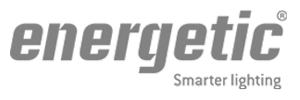 Every business owner worth his salt knows that it’s important to create an environment where employees can be productive. One factor that plays a vital role in making this happen is lighting.
Every business owner worth his salt knows that it’s important to create an environment where employees can be productive. One factor that plays a vital role in making this happen is lighting.
It’s easy to understand how lights can have such a powerful effect in your workplace in [CITY]. If you have too little light, workers end up straining their eyesight. Conversely, having too much light can make them squint at whatever it is they’re working on.
So, clearly, there’s a need to strike a balance when it comes to lighting. Recent studies show that when we spend a large chunk of our time indoors, it becomes important to understand how a room’s artificial lighting can affect our well-being. This is where Human-centric Lighting (HCL) comes in.
What Is HCL?
Human-centric lighting is about supporting wellbeing, health, and performance through holistic and strategic planning and application of the visual, emotional, and biological effects of light. It looks at the effect of lighting both on our body’s circadian rhythms (the natural mechanisms that regulate our sleep wake cycles) and comfort. In the workplace, this can also encompass our ability to stay alert and focused on tasks.
Because much still has to be learned about the effect of lighting on the human body, some people think of HCL as a new technology. In any case, a recent study by BIS Research shows that the global market for HCL is expected to reach a cool $3.91 billion by 2024.
How Does HCL Affect You in the Workplace?
Lighting can have a noticeable effect on your productivity. According to a City University London study commissioned by Philips, “Poor lighting can result in eye strain, fatigue and aching, which in turn is likely to lead to deterioration in performance.”
In other words, working in the right lighting conditions help you stay active, focused, and even motivated. For example, a dim conference room can make employees feel lethargic—not exactly what you would want during brainstorming sessions.
Apart from issues concerning productivity, studies have discovered that poor lighting is correlated to having negative health effects. Staff who are exposed to light that’s too harsh or those not exposed to enough light tend to report issues with sleep and health.
Initial studies also show that people who live and work in spaces with HCL elements experience fewer symptoms of eyestrain, headaches, and drowsiness.
Why Should We Incorporate HCL Technology in the Workplace?
As workplaces become more modern, more business operators are realizing the importance of having good lighting for their workers. Many of them don’t know it, but they’re also applying the principles of human-centric lighting. For example, the use of dimmers, sensors, and timers, makes lighting systems more flexible and lets employees be exposed to different levels of light—useful for adapting to natural sunlight levels as the day passes.
Admittedly, transitioning to HCL can be a big move for some businesses. If you’re considering modernizing your workplace’s lighting system, it’s wise to consider talking to an interior designer specializing in lighting design. You should also get employees involved in this process so you get feedback on what kind of light they prefer having to stay productive at work.


 Apartment Lighting
Apartment Lighting Area Lighting
Area Lighting Automotive Lighting
Automotive Lighting Building Wall Pack Lighting
Building Wall Pack Lighting Canopy Lighting
Canopy Lighting High & Low Bay Lighting
High & Low Bay Lighting Industrial Lighting
Industrial Lighting Parking Lots & Garages
Parking Lots & Garages Pathway Lighting
Pathway Lighting Retail Lighting
Retail Lighting Stairwell Lighting
Stairwell Lighting























